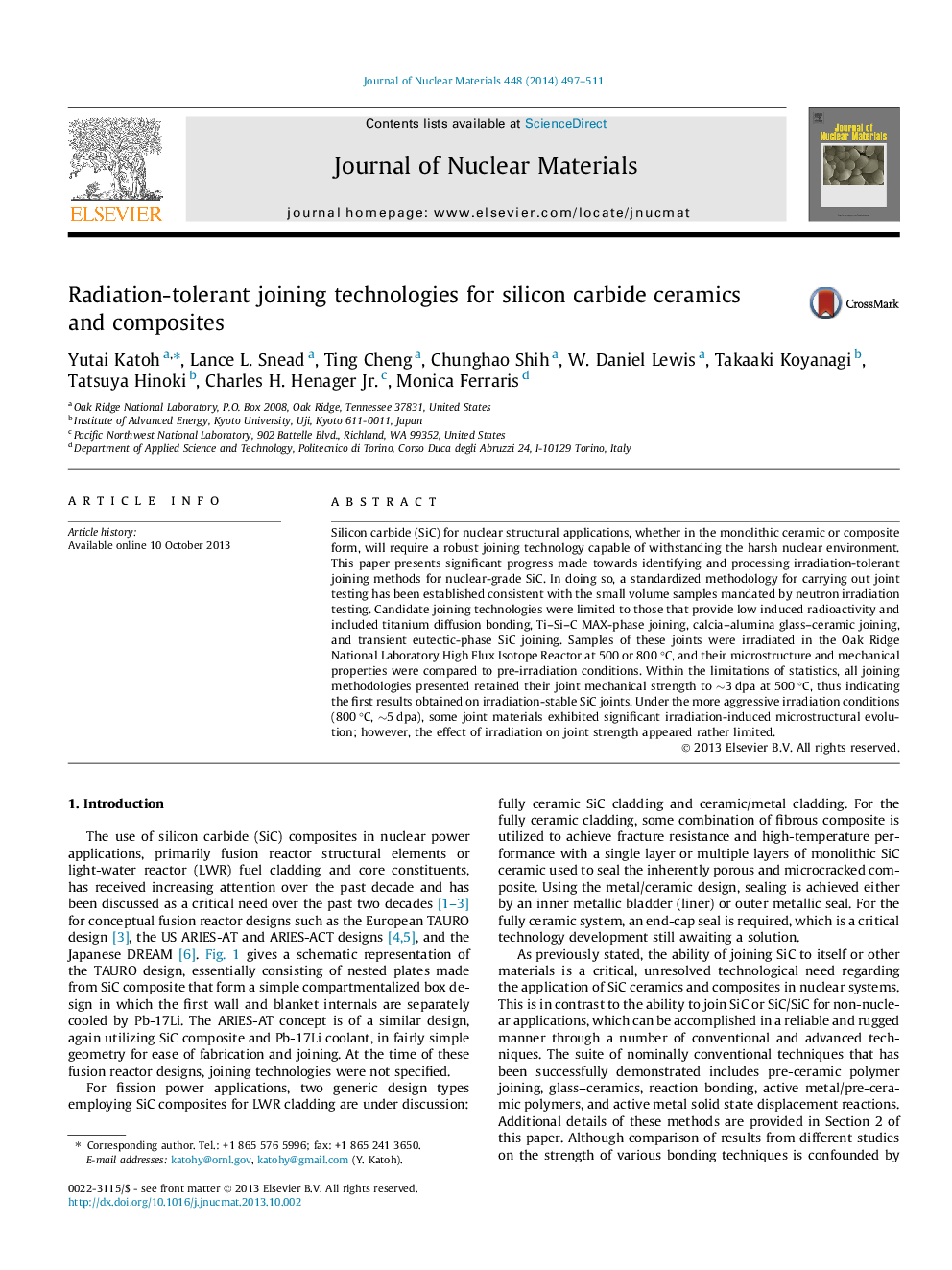| Article ID | Journal | Published Year | Pages | File Type |
|---|---|---|---|---|
| 7968195 | Journal of Nuclear Materials | 2014 | 15 Pages |
Abstract
Silicon carbide (SiC) for nuclear structural applications, whether in the monolithic ceramic or composite form, will require a robust joining technology capable of withstanding the harsh nuclear environment. This paper presents significant progress made towards identifying and processing irradiation-tolerant joining methods for nuclear-grade SiC. In doing so, a standardized methodology for carrying out joint testing has been established consistent with the small volume samples mandated by neutron irradiation testing. Candidate joining technologies were limited to those that provide low induced radioactivity and included titanium diffusion bonding, Ti-Si-C MAX-phase joining, calcia-alumina glass-ceramic joining, and transient eutectic-phase SiC joining. Samples of these joints were irradiated in the Oak Ridge National Laboratory High Flux Isotope Reactor at 500 or 800 °C, and their microstructure and mechanical properties were compared to pre-irradiation conditions. Within the limitations of statistics, all joining methodologies presented retained their joint mechanical strength to â¼3 dpa at 500 °C, thus indicating the first results obtained on irradiation-stable SiC joints. Under the more aggressive irradiation conditions (800 °C, â¼5 dpa), some joint materials exhibited significant irradiation-induced microstructural evolution; however, the effect of irradiation on joint strength appeared rather limited.
Related Topics
Physical Sciences and Engineering
Energy
Nuclear Energy and Engineering
Authors
Yutai Katoh, Lance L. Snead, Ting Cheng, Chunghao Shih, W. Daniel Lewis, Takaaki Koyanagi, Tatsuya Hinoki, Charles H. Jr., Monica Ferraris,
